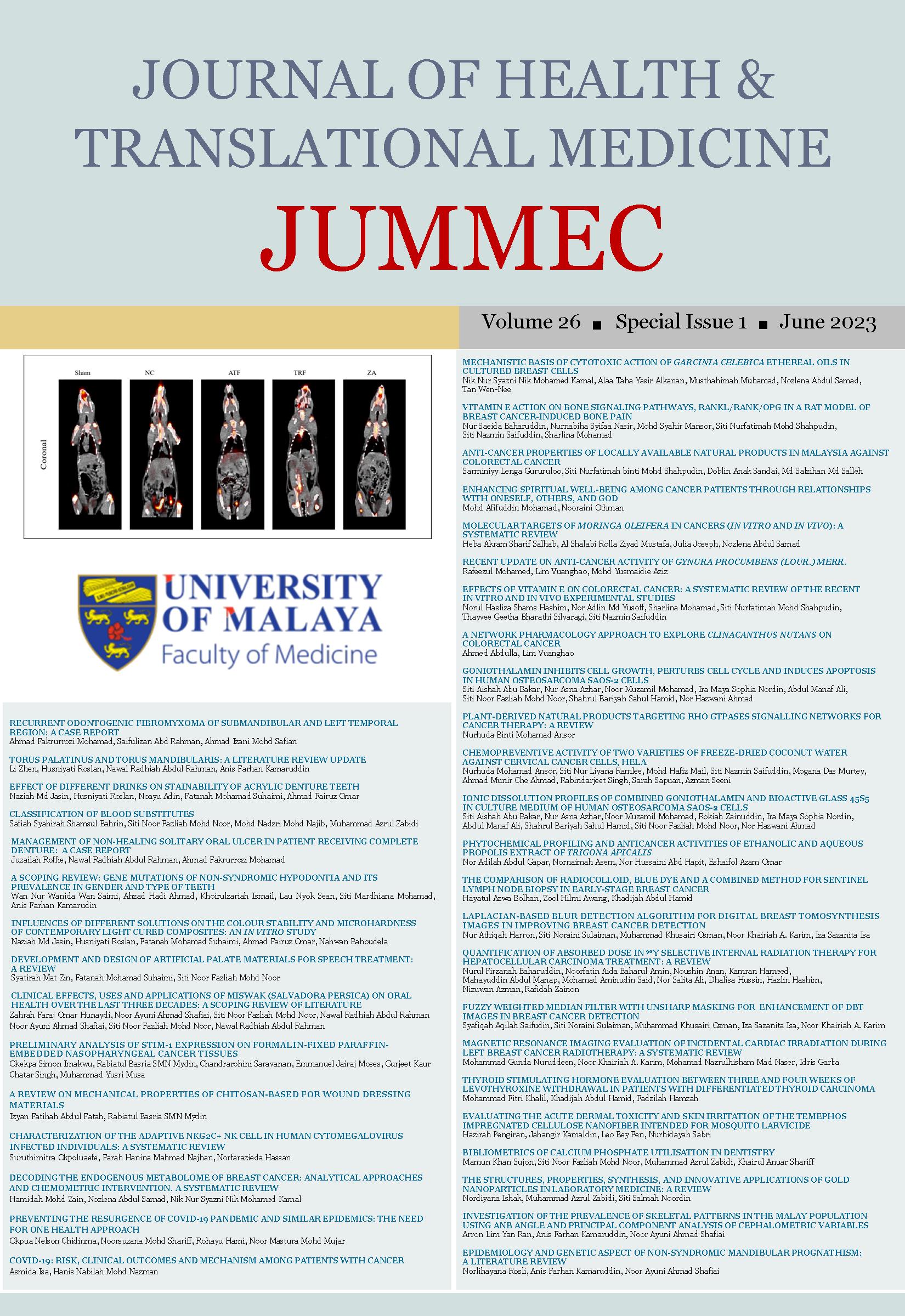A SCOPING REVIEW: GENE MUTATIONS OF NONSYNDROMIC HYPODONTIA AND ITS PREVALENCE IN GENDER AND TYPE OF TEETH
Received 2022-12-11; Accepted 2023-03-28; Published 2023-06-06
DOI:
https://doi.org/10.22452/jummec.sp2023no1.30Abstract
Non-syndromic hypodontia is a developmental anomaly characterized by the absence of one to six of permanent teeth. The goal of this review was to identify all known gene mutations, prevalence of gender and type of teeth, to review current research and identify knowledge gaps on the topic of nonsyndromic hypodontia. Three electronic databases were performed (Science Direct, PubMed, and Scopus) and restricted to English papers published after 2012 until 2019. Search terms were combined as follows: Hypodontia or 'non-syndromic hypodontia' and 'genes' or 'tooth anomaly' and 'mutation' or 'genes' and were checked against the inclusion criteria independently by two investigators. From 16 studies, five genes currently known caused non-syndromic hypodontia: WNT10A (37 variants, 256 patients), MSX1 (9 variants, 112 patients), PAX9 (17 variants, 79 patients), AXIN2 (8 variants, 60 patients) and EDA (2 variants, 11 patients). It was demonstrated that females exhibited a higher prevalence of hypodontia with 89.3% as compared to males with 84.2%. The most commonly missing teeth was a lateral incisor, followed by second premolar and central incisor. Five genes, including WNT10A, PAX9, MSX1, AXIN2 and EDA, are currently considered to have the ability to cause nonsyndromic hypodontia. Lateral incisor was found to be commonly missing teeth and there was an increased risk for females to have hypodontia than males.
Downloads
Downloads
Published
Issue
Section
License
All authors agree that the article, if editorially accepted for publication, shall be licensed under the Creative Commons Attribution License 4.0 to allow others to freely access, copy and use research provided the author is correctly attributed, unless otherwise stated. All articles are available online without charge or other barriers to access. However, anyone wishing to reproduce large quantities of an article (250+) should inform the publisher. Any opinion expressed in the articles are those of the authors and do not reflect that of the University of Malaya, 50603 Kuala Lumpur, Malaysia.


